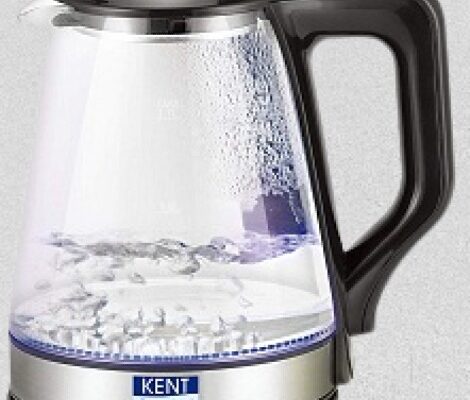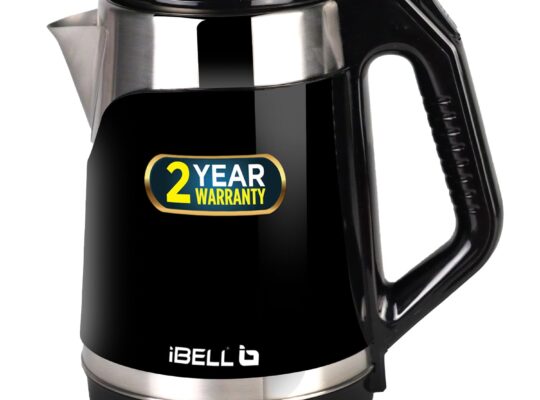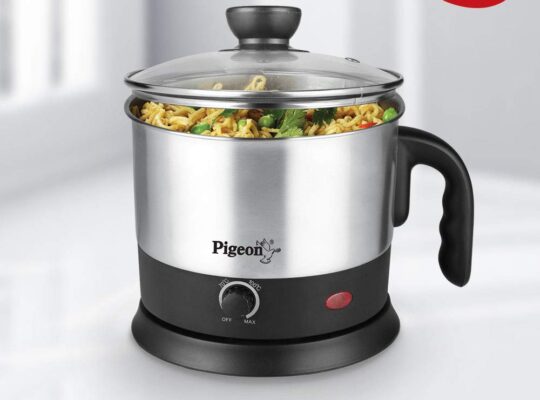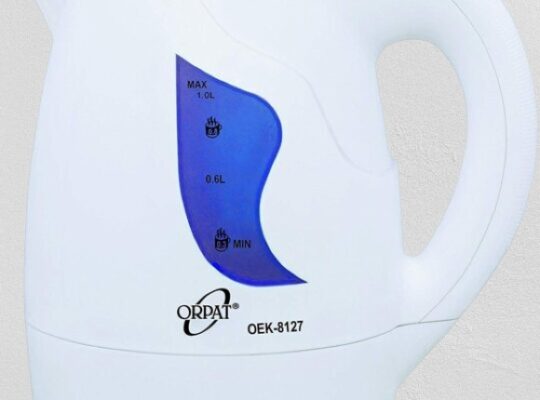You might be wondering if you can fry in an electric kettle. While it may seem like a convenient option, the reality is quite different. Electric kettles aren’t designed for frying, and using them that way poses serious safety risks, including the potential for fires. Before you consider this method, it’s essential to understand the dangers involved and explore safer alternatives that might suit your cooking needs better.
Key Takeaways
- Frying in an electric kettle is unsafe due to the high temperatures needed, risking overheating and fire hazards.
- The kettle’s design is not meant for frying, which can lead to oil spillage and burns.
- Flash points of oil used for frying can ignite, posing a significant fire risk.
- Alternative frying methods, like air frying or sautéing, are safer and more suitable for cooking.
- Always follow manufacturer guidelines and safety practices when using an electric kettle to prevent accidents.
Understanding Electric Kettles and Their Functions
Electric kettles are versatile appliances designed primarily for boiling water quickly and efficiently.
These devices operate using a heating element that rapidly brings water to a boil, making them ideal for tea, coffee, or instant meals. However, it’s vital to understand their limitations. Unlike traditional stovetops, electric kettles aren’t designed for cooking or frying food. Attempting to fry in one can lead to overheating, potential damage, or even fire hazards. Always prioritize safety by using the appliance solely for its intended purpose. Be cautious of the kettle’s surface, as it can become extremely hot during operation. Familiarize yourself with the manufacturer’s guidelines to guarantee safe and effective use of your electric kettle. Additionally, remember that the heating element in electric kettles is specifically crafted for boiling liquids, not for frying or cooking food.
The Concept of Frying: What You Need to Know
Frying involves cooking food in hot oil, which creates a crispy texture and enhances flavor. When you fry, it’s important to choose the right oil, as different oils have varying smoke points that can affect the cooking process.
You’ll typically want oils with high smoke points, like vegetable or canola oil. Temperature control is essential; too hot, and you risk burning food or causing oil to ignite.
Also, remember that frying can splatter, creating a mess and potential safety hazards. Always use a deep pot or pan to minimize spills.
If you’re considering frying in an electric kettle, keep in mind that not all kettles are designed for this purpose, which raises concerns about safety and functionality.
Safety Risks of Frying in an Electric Kettle
Frying in an electric kettle can pose serious safety risks that you shouldn’t ignore.
The potential for fire hazards and oil spillage can lead to dangerous situations in your kitchen.
It’s essential to understand these risks before attempting to fry, ensuring you take necessary precautions.
Fire Hazard Concerns
While it might seem convenient to fry food in an electric kettle, doing so poses significant fire hazard concerns that shouldn’t be overlooked.
The high temperatures required for frying can easily exceed the kettle’s safety limits, risking overheating and potential ignition of the kettle’s materials. If the oil reaches its flash point, it could ignite and cause a dangerous fire.
Additionally, the lack of temperature control in most kettles increases the risk of overheating. When frying, you also run the risk of creating smoke, which can trigger smoke alarms and lead to panic.
To guarantee your safety and prevent fire hazards, it’s best to use appliances specifically designed for frying, like a deep fryer or stovetop pan.
Oil Spillage Risks
When using an electric kettle for frying, the risk of oil spillage can be significant. Unlike traditional fryers, electric kettles aren’t designed to handle large amounts of hot oil. If the oil reaches its boiling point, it can easily overflow, creating a fire hazard or causing burns.
You need to be cautious when adding food; dropping it in too quickly can lead to splattering. Additionally, the design of some kettles may trap steam and cause pressure to build, increasing the chance of an overflow.
Always monitor the oil closely, and never fill the kettle more than halfway. By understanding these risks, you can avoid dangerous accidents and enjoy a safer cooking experience.
Alternative Methods for Frying
If you’re looking for alternatives to traditional frying methods, several options can deliver delicious results without the risks associated with high-temperature oil.
Air frying is a popular choice; it circulates hot air around food, achieving a crispy texture with minimal oil.
Baking can also yield satisfying results, creating healthy versions of your favorite fried dishes.
For a stovetop method, consider sautéing, which uses a small amount of oil and allows for better temperature control.
Grilling or broiling can impart a delightful char to meats and vegetables, enhancing flavor without deep frying.
Finally, you might try steaming, which maintains moisture while cooking.
Each of these methods promotes safer cooking practices while still satisfying your cravings for fried foods.
Tips for Safe Cooking Practices
To guarantee a safe cooking experience, always keep your kitchen organized and free from distractions. Ascertain all utensils and ingredients are within reach before you start.
Never leave your electric kettle unattended while cooking, as this can lead to overheating or spills. Use a thermometer to monitor oil temperature, preventing it from reaching dangerous levels. Keep a fire extinguisher nearby, just in case.
Always handle hot oil with care; use long tongs or a slotted spoon to avoid burns. If any smoke or strange odors arise, turn off the kettle immediately and unplug it.
Finally, make sure your kettle’s electrical cord isn’t near water or heat sources to prevent electrical hazards. Safety first!
Final Thoughts on Cooking With Electric Kettles
When cooking with electric kettles, it’s essential to understand their limitations and the specific safety precautions you must take.
While they can be versatile, relying solely on kettles for frying isn’t advisable; consider alternative cooking methods for better results.
Always prioritize safety to avoid accidents and guarantee a successful cooking experience.
Cooking Limitations Explained
Although electric kettles are versatile appliances, they do have significant cooking limitations that you should be aware of.
While they’re great for boiling water or making instant meals, attempting to fry food can lead to dangerous outcomes. Electric kettles aren’t designed to handle the high temperatures needed for frying, which can result in uneven cooking and potential overheating.
The lack of temperature control can also lead to burnt food or even appliance damage. Additionally, the confined space in a kettle makes it challenging to achieve the proper frying technique.
It’s important to remember that for frying, using a dedicated frying pan or deep fryer is a safer and more effective option. Stick to what electric kettles do best to guarantee safety in your kitchen.
Safety Precautions Required
While you might be tempted to experiment with your electric kettle, it’s crucial to prioritize safety.
First, never exceed the maximum fill line; overfilling can cause boiling oil to spill, leading to burns or fire hazards. Use only oils with high smoke points, as low smoke point oils can ignite.
Always monitor your kettle during use; don’t leave it unattended. Make sure to use appropriate utensils to prevent scratching the kettle’s interior.
Keep the kettle on a stable, heat-resistant surface, away from flammable materials. Remember to unplug the kettle after use and allow it to cool completely before cleaning.
Alternative Cooking Methods
Exploring alternative cooking methods can enhance your culinary experience with an electric kettle. You can boil water for instant noodles or prepare hot beverages like tea and coffee. Steaming vegetables is another excellent option; simply place a heat-safe bowl above the water level. However, be cautious and avoid methods that could lead to dangerous situations. Never attempt frying or cooking foods that require high oil temperatures, as electric kettles aren’t designed for this purpose and can pose fire hazards. Always monitor your kettle while in use, and guarantee it’s on a stable surface. Additionally, consider the safety features of electric kettles to ensure safe operation during cooking.
Frequently Asked Questions
Can I Fry Frozen Food in an Electric Kettle?
You shouldn’t fry frozen food in an electric kettle. The moisture from frozen items can cause dangerous splattering, potentially damaging the appliance or causing burns. It’s safer to use a dedicated fryer or stovetop method instead.
What Types of Oil Are Best for Frying in an Electric Kettle?
For frying in an electric kettle, use oils with high smoke points, like canola, peanut, or sunflower oil. These oils handle heat well, reducing the risk of smoke and potential hazards during frying.
How Do I Clean an Electric Kettle After Frying?
After frying, unplug your kettle and let it cool. Carefully dispose of the oil, then wash the interior with warm soapy water. Rinse thoroughly, ensuring no residue remains to prevent future contamination or odors.
Can I Use a Kettle With a Non-Stick Coating for Frying?
You shouldn’t use a kettle with a non-stick coating for frying. High heat can damage the coating, releasing harmful chemicals. Stick to traditional frying methods to guarantee safety and maintain your equipment’s integrity.
Is Frying in an Electric Kettle Energy-Efficient?
Frying in an electric kettle isn’t the most energy-efficient method. You’re likely to consume more energy due to prolonged heating. Consider safer, more efficient alternatives like stovetops or dedicated fryers for your cooking needs.
Conclusion
To summarize, frying in an electric kettle poses serious safety risks that you should avoid. The high temperatures required for frying can lead to overheating and potential fires, making it unsafe for this purpose. Instead, opt for safer cooking methods like air frying or sautéing, which provide better temperature control and crispy results. Always prioritize safety by using appliances according to their intended functions. Stay safe in the kitchen and choose methods that protect both you and your home.




